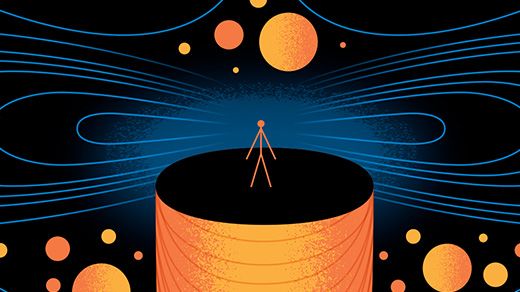Exercise boosts memory like caffeine
Posted in health
Researchers have discovered a nutrient in certain fruits and vegetables they call a “geroprotector,” a new term for something that protects against the root causes of aging. And they believe this geroprotector does such […].
The Airbus-built Solar Orbiter spacecraft has been closed up inside the payload fairing of a United Launch Alliance Atlas 5 rocket in preparation for liftoff from Cape Canaveral in February on a joint mission between the European Space Agency and NASA.
Technicians inside the Astrotech payload processing facility encapsulated the Solar Orbiter spacecraft — designed with thermal shielding to protect against the heat of the sun — inside the Atlas 5’s payload fairing Jan. 20. The spacecraft inside the Atlas 5 rocket’s 4-meter-diameter (13.1-foot) aerodynamic nose shroud will soon travel to ULA’s Vertical Integration Facility, where crane will hoist the payload package atop the launcher.
Valued at nearly $1.7 billion, the Solar Orbiter mission will travel closer to the sun than Mercury, where it will join NASA’s Parker Solar Probe for tandem observations of the solar wind and giant solar eruptions that can affect communications and electrical grids on Earth, plus satellite operations.
For decades, physicists have struggled to create a quantum theory of gravity. Now an approach that dates to the 1970s is attracting newfound attention.
To map Earth’s atmosphere, satellite data must be carefully collected, processed, and archived. We cover its journey from outer space to the ground.
Throughout human history, doomsayers — people predicting the end of the world — have lived largely on the fringes of society. Today, a doomsday industry is booming thanks to TV shows, movies, hyper-partisan politics, and the news media. With the country’s collective anxiety on the rise, even the nation’s wealthiest people are jumping on board, spending millions of dollars on survival readiness in preparation for unknown calamities.
We sent Thomas Morton to see how people across the country are planning to weather the coming storm.
Check out VICE News for more: http://vicenews.com
Follow VICE News here:
Facebook: https://www.facebook.com/vicenews
Twitter: https://twitter.com/vicenews
Tumblr: http://vicenews.tumblr.com/
Instagram: http://instagram.com/vicenews
More videos from the VICE network: https://www.fb.com/vicevideo
#VICEonHBO
It doesn’t seem like all that long ago that even the idea of an electric Ferrari was controversial. Indeed, it was 2016 when then-Ferrari Chairman Sergio Marchionne said that, “with Ferrari, (an electric car) is almost an obscene concept,” before he finished up with, “you’d have to shoot me first.” Well, Sergio– times sure do change, don’t they? At least, that’s what a series of plans for an electric Ferrari from a leaked patent filing would seem to say about the matter!
In fairness to Marchionne, he would pass on before Ferrari built a pure electric car, succumbing as he did to cancer at the age of 66. Tragic as that was, what isn’t tragic is Ferrari joining the rest of the automotive universe in the 21st century with plans to build a for-real battery-powered Ferrari by 2025.
The push for Ferrari to finally go electric was, no doubt, accelerated by the success of the electric Porsche Taycan and, obviously, the rapid growth of Tesla (and, likely, the staggering growth of TSLA stock). With the launch of its first PHEV last year and recently announced plans to go “60% hybrid by 2022”, then, the step towards all-electric seems ready to happen.
Artificial intelligence helped detect an outbreak of the coronavirus one week before the CDC issued a warning.
The BlueDot algorithm scours news reports and airline ticketing data to predict the spread of diseases like those linked to the flu outbreak in China.









